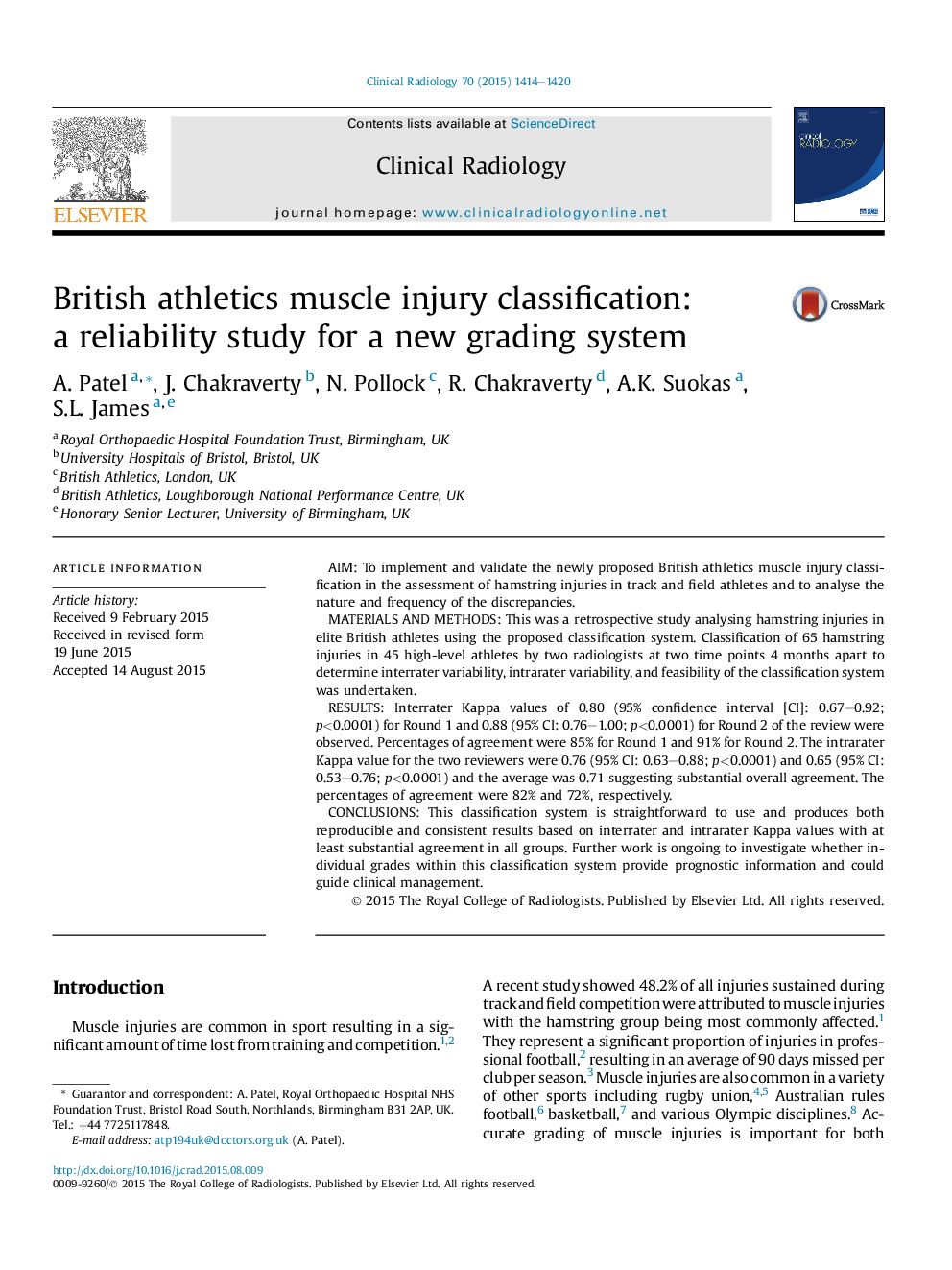| Article ID | Journal | Published Year | Pages | File Type |
|---|---|---|---|---|
| 3981361 | Clinical Radiology | 2015 | 7 Pages |
•This classification system is based on MRI parameters shown to have prognostic relevance.•It is simple to use, reproducible and clinically relevant which will enhance clinical practice.•Once clinicians are familiar with the classification inter & intrarater reliability will improve.
AimTo implement and validate the newly proposed British athletics muscle injury classification in the assessment of hamstring injuries in track and field athletes and to analyse the nature and frequency of the discrepancies.Materials and methodsThis was a retrospective study analysing hamstring injuries in elite British athletes using the proposed classification system. Classification of 65 hamstring injuries in 45 high-level athletes by two radiologists at two time points 4 months apart to determine interrater variability, intrarater variability, and feasibility of the classification system was undertaken.ResultsInterrater Kappa values of 0.80 (95% confidence interval [CI]: 0.67–0.92; p<0.0001) for Round 1 and 0.88 (95% CI: 0.76–1.00; p<0.0001) for Round 2 of the review were observed. Percentages of agreement were 85% for Round 1 and 91% for Round 2. The intrarater Kappa value for the two reviewers were 0.76 (95% CI: 0.63–0.88; p<0.0001) and 0.65 (95% CI: 0.53–0.76; p<0.0001) and the average was 0.71 suggesting substantial overall agreement. The percentages of agreement were 82% and 72%, respectively.ConclusionsThis classification system is straightforward to use and produces both reproducible and consistent results based on interrater and intrarater Kappa values with at least substantial agreement in all groups. Further work is ongoing to investigate whether individual grades within this classification system provide prognostic information and could guide clinical management.
